

Discover more from AutoMarketplace
🔒⚡ Uber & Lyft NYC UR Remains Sub-53% In February, EV Trip Market Share Surging
Year-to-date (YTD) UR remains below 50% as more reports of > 5 month NYC app driver waitlists. Are "lockouts" coming soon? At the same time, NYC Uber and Lyft EV trips are surging
The industrywide utilization rate (UR) is a key metric used in TLC’s driver minimum pay calculation for high-volume bases (currently only Uber and Lyft)
UR is how busy a driver is kept while logged into either Uber or Lyft in NYC
February industrywide UR increased 1% to 49.7% (month-over-month), but still remains below 50% Year-to-Date (YTD)
UR remaining below the 53% UR floor of NYC minimum driver pay formula is concerning, implying lower driver earnings, longer waitlists, and increasing risk of “lockouts” returning, or ability for active Uber/Lyft drivers to access app 24/7
Green Rides Initiative tab reveals record 18.6% of all Uber and Lyft NYC trips were done in either wheelchair accessible vehicles (WAV) or electric vehicles (EVs)
This is our seventh monthly update on NYC TLC utilization rates (UR). UR can simply be described as how busy an Uber / Lyft NYC driver is kept. It is a key metric for TLC-licensed drivers to track because it tells you the probability of “lockouts” returning, the appropriateness of NYC for-hire vehicle (TLC Plate) supply vs. trip demand and how much time it might take a prospective app driver to get off NYC waitlists.
The lower UR is, especially anything that risks breaking the 53% driver minimum pay-related UR floor, the higher probability of “lockouts”, or ability for active Uber/Lyft drivers to access app 24/7, and the longer new drivers will have to wait to get access to Uber and Lyft in NYC. For example, we know of some drivers who have been waiting more than five months to get off the waitlists.
Feb 2024 UR Figures
Since there is not a like-for-like February 2023 benchmark, it’s best to summarize the latest TLC Factbook data as follows:
⚫ Uber UR was 52.4% in February 2024. While this is an increase from seasonally slow January, this is still the second lowest reported UR for the company since the TLC began reporting UR stats in April 2023
🟣 Lyft UR was to 46.3% in February 2024. This is the third lowest reported UR (August 2023: 43.8%, January 2024: 44.7%) for the company since April 2023
📉 Industrywide UR was 50.8% in February 2024. While this is an increase from seasonally slow January, this is still the second lowest reported UR for the industry since the TLC began reporting UR stats in April 2023
📉 Industrywide UR is 49.7% Year-to-Date (YTD), well below 53% UR floor in the NYC minimum driver pay formula

Remember, industrywide UR is measured on a calendar year (January to December) basis, so there might be some months that can drag the average lower, but are offset by other months that are busier. A 😓 49.7% industrywide UR still seems dangerously below the 53% UR floor included in the TLC’s minimum driver pay formula. A sub-53% calendar year UR would be disastrous for both Uber and Lyft NYC operations.
To be simple, Uber and Lyft could be forced to “lockout”, or restrict the ability for active NYC TLC drivers to access their driver apps 24/7, if the companies observe they cannot comfortably sustain above a 53% industrywide UR. There are already early warning signs with reports of TLC drivers waiting more than 5 months (if not longer) to get off the NYC rideshare app waitlists.
Article continues after advertisement
⚡♿ Green Rides Record
In March 2024 a record 18.64% of all Uber and Lyft NYC trips were done in either a wheelchair accessible vehicle (♿ WAV) or electric vehicle (⚡ EV). With the addition of ~10,000 additional EVs to the NYC for-hire vehicle (FHV) fleet over the last several months, this figure also relatively matches the latest FHV supply data.
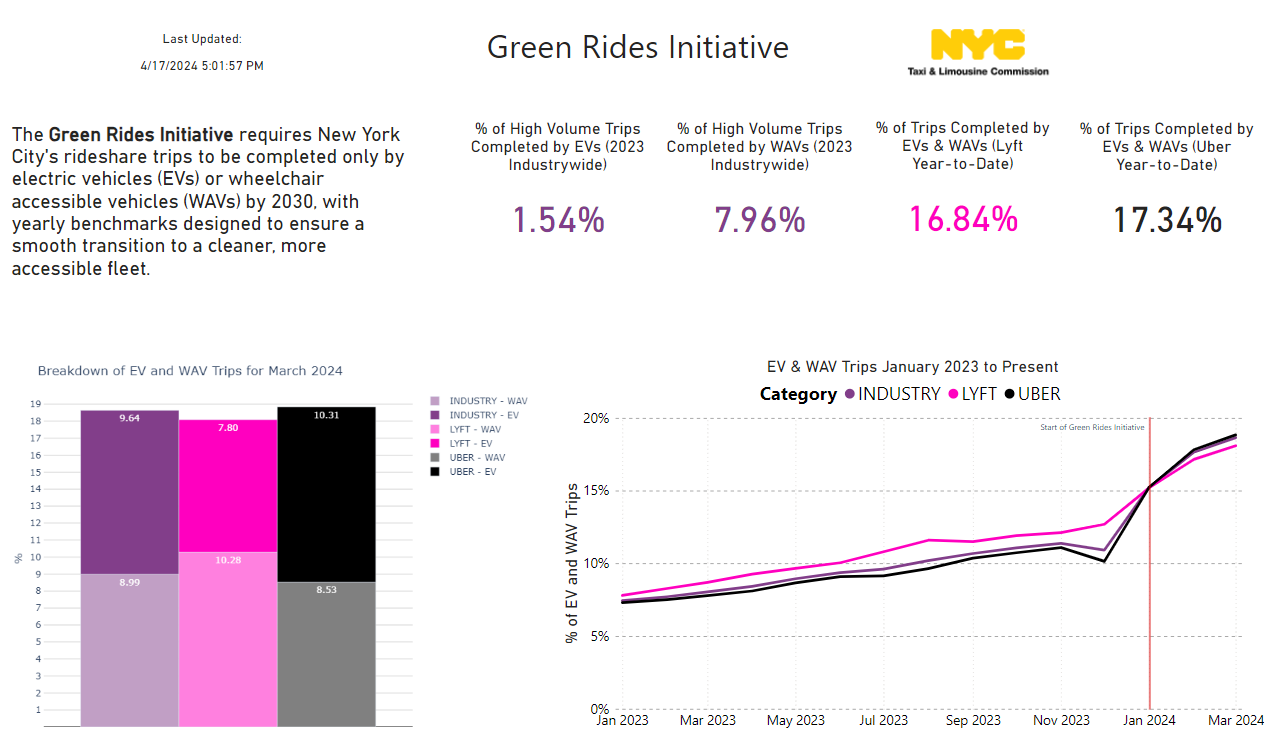
🚕 Taxi Medallion Recovery Slowing?
The yellow cab and story continues to show promising, but slow, signs of recovery. The number of working yellow cabs remained flat month-over-month at 9,074 in February (13,587 total taxi medallions exist). The working taxi driver count actually declined by 110 TLC drivers month-over-month to 12,026 in February.
Yellow cab trip volumes remain stuck at ~50% of pre-pandemic levels.
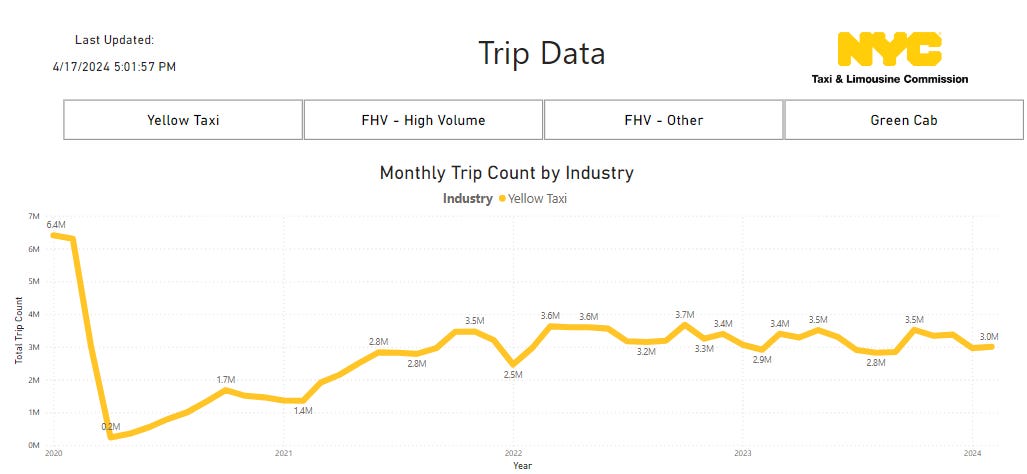
Why Is There A Utilization Rate?
For those who might want to understand the background to why a utilization rate (UR) exists we’ve copy-pasted a slightly revised explanation from another article we published last year.
Let’s briefly overview the following:
What is the utilization rate (UR)?
Why did the TLC create this measurement?
Why would it cause Uber and/or Lyft to introduce “lockouts”?
Per Mile, Per Minute & UR
There are three key inputs the TLC uses when calculating minimum driver pay rates for high-volume for-hire service bases (HVFHS). Remember, these rules are currently only applicable to Uber and Lyft in NYC.
Per Mile Rate: Compensation for distance travelled. Estimates driver expenses, such as fuel, maintenance & insurance
Per Minute Rate: Compensation for time. Solves for “net wage” that’s benchmarked to New York State & City gross minimum wage rules
Utilization Rate (UR): Essentially how busy a driver is kept. Time with a passenger(s) ➗ total hours “online” waiting for / travelling to a trip plus time with passenger(s)

The UR, the TLC would likely argue, is a metric the regulator created to ensure the industry consisted of highly utilized (or busy) commercially licensed drivers vs. idling part-time “rideshare” drivers. Given congestion concerns and how lucrative (and regulated) NYC’s for-hire transportation market had historically been, the TLC likely wanted to “re-professionalize” the industry.
Remember, the TLC & City government (we hope 🤷) want a for-hire transport market consisting of mostly full-time drivers that earn a protected NYC middle class wage through ensuring trip demand and driver supply are kept in healthy equilibrium. The FHV License Pause (a/k/a TLC Plate Cap), limiting the number of NYC for-hire vehicles, was also created in the same vein as the UR
Both are mechanisms to protect driver wages and also limit congestion. For example, capping how many vehicles (supply) can service NYC for-hire trips (demand), will likely lead to higher driver wages.
So, how does this relate to NYC Uber (or Lyft) driver waitlists and “lockouts”?
Note: Lyft NYC also briefly had “lockouts”, so the Uber example below will also be applicable to Lyft.
Uber NYC Planner (“Lockouts”)
The genesis of the infamous NYC Uber “Planner” can be traced back to minimum pay rules & formula mentioned above. After the minimum pay laws passed in late 2018, high-volume for-hire services (Uber, Lyft and at that time Via, Juno also) needed to ensure that independently contracted TLC drivers were earning the equivalent of ~$23.00 per hour gross (2020) and now ~$27.70 per hour gross while logged into an HV app.
The reason why we italicized “while logged into an HV app”, underscores why Uber (and Lyft in a similar manner) created the “Planner” (or “Lockouts”) in NYC.
⭐ What Uber (& Lyft) need to solve for is ensuring logged-in NYC TLC drivers are kept as busy as possible (high UR), so Uber (or Lyft) didn’t have to come out-of-pocket, raise fares, lower their commissions to ensure the TLC minimum pay thresholds were being satisfied. ⭐
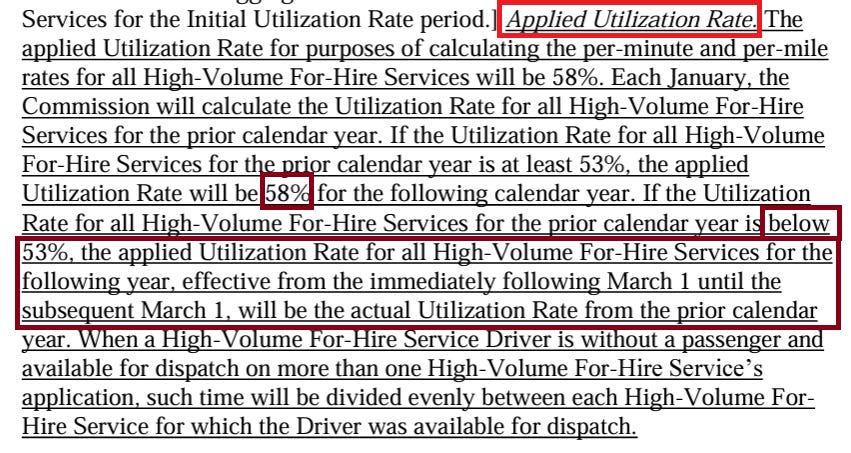
To be simple, let’s say a driver was actively logged into the Uber NYC app for an hour and only got 1 trip that earned them gross $15, Uber, to be illustratively simple, would need to come out of pocket ~$12.70 (using 2024 figures), to ensure the minimum driver pay standard was met, or face a fine. In addition, as noted above, if the calendar year industry utilization rate falls below the 53% industrywide floor, Uber and Lyft will have to use the actual UR, not 58%.
⭐ The higher the UR (denominator), the better for Uber & Lyft and NYC TLC drivers who work on their platform. If the industrywide UR falls below the 53% minimum pay formula floor, it will have a significant financial impact, so Uber/Lyft would institute lockouts to prevent that from happening. ⭐
Example with 58% UR denominator = [($16) / (.58)] = $27.59
Example with 50% UR denominator = [($16) / (.53)] = $32.00
Therefore, the system Uber (and Lyft in a similar way) came up with in NYC to ensure they wouldn’t be coming out of pocket on wages or need to increase fares or lower their trip commissions was “lockouts”. The Uber Planner, as can be seen in image below, prioritized drivers based on:
Number of trips completed
Rating
Cancellation rate
(Note: Uber Black thresholds were lower because the average earnings per Black trip is much higher, so the minimum pay standard is more easily met)
Uber likely wanted to ensure their core NYC TLC driver base was highly-rated, full-time drivers who often accepted trip requests vs. a mix of part-timers and full-timers. Uber could better utilize this driver base and in turn these drivers would likely benefit from increased and more stable/predictable earnings »» in turn making it easier for the company to retain them.
However, the original Uber/Lyft promise of flexibility & working whenever you wanted was redefined in NYC, which to begin with, had always been a unique “rideshare” market, defined by existing taxi regulations and full-time commercially licensed drivers. The COVID pandemic saw the TLC abandon utilization rate requirements for several reasons, notably a well publicized driver shortage and a collapse in trip demand. However, as TLC drivers came back and trip demand rebounded, the UR rules were reinstituted.







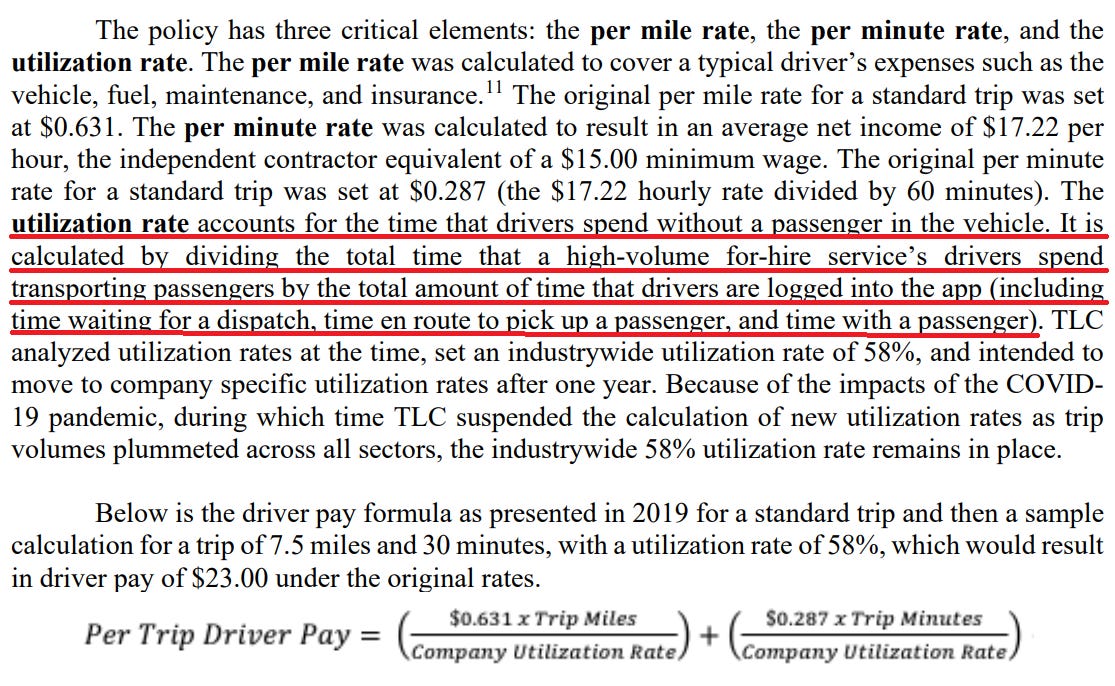
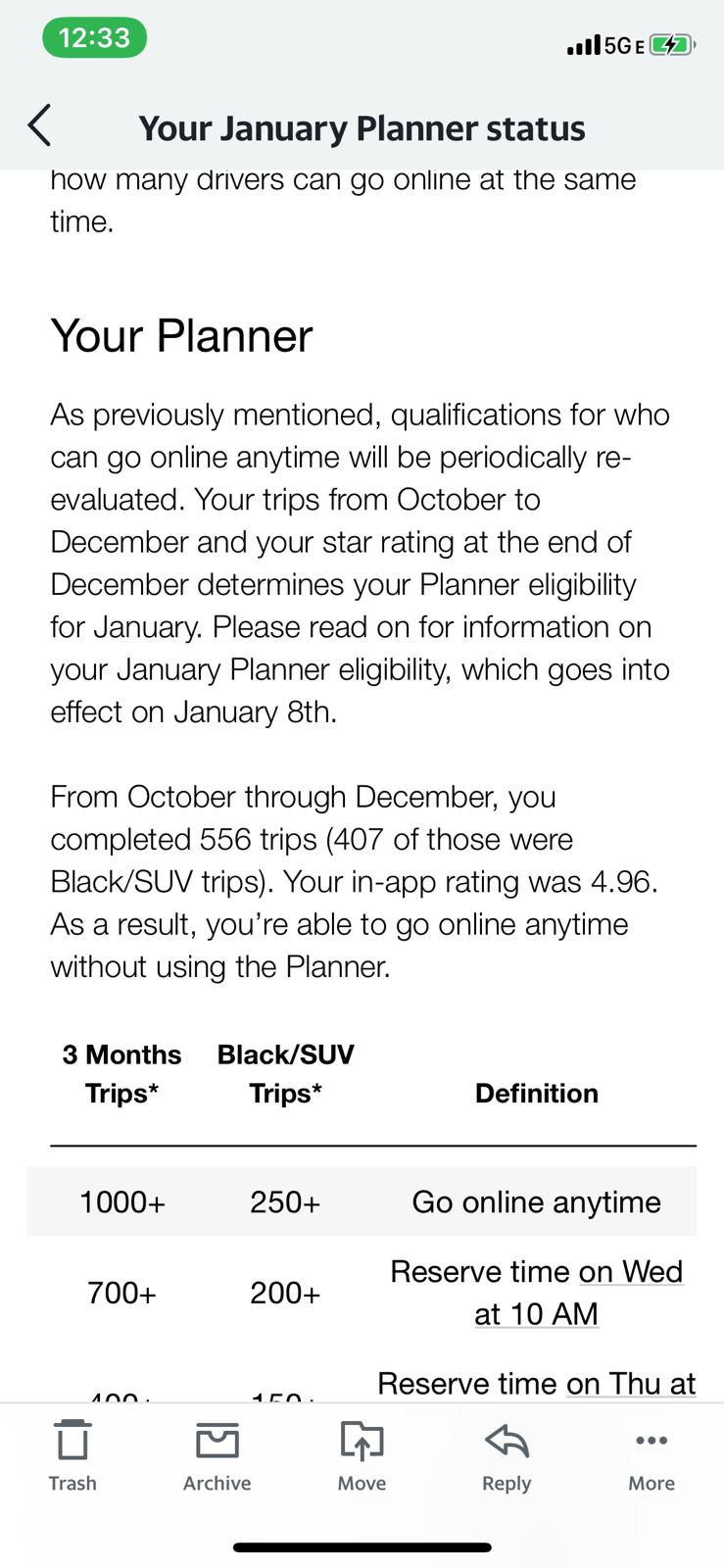


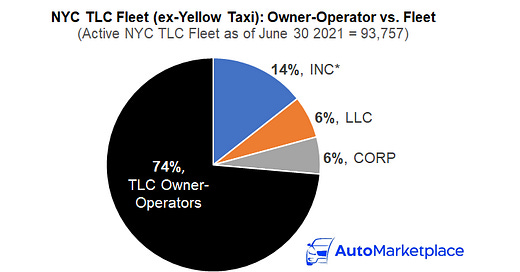



Well tlc have to lower the ur, they added 10k evs.